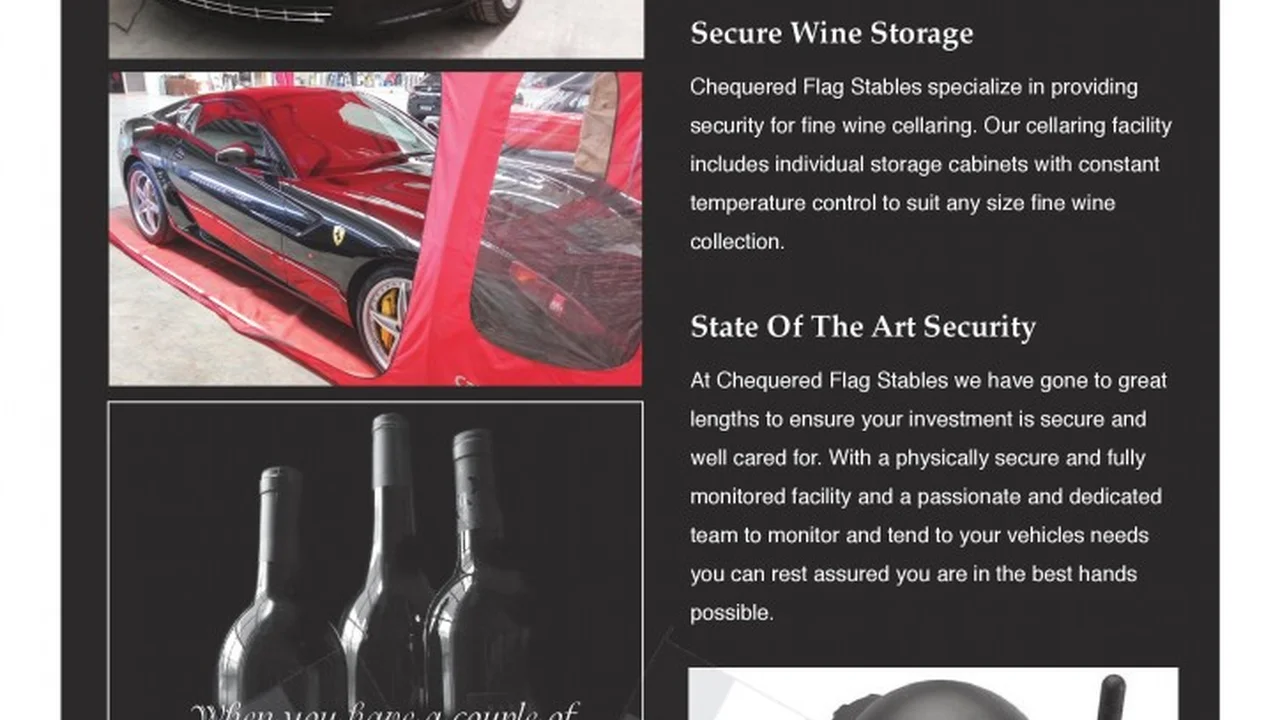Classic Car Storage Ferrari Porsche Aston Martin Best Practices
Discover 10 essential tips for maintaining your classic Ferrari, Porsche, or Aston Martin and ensuring its longevity and performance.

Understanding the Unique Needs of Classic Cars
So, you've got yourself a stunning piece of automotive history – a classic Ferrari, Porsche, or Aston Martin. Congratulations! These machines are more than just cars; they're investments, works of art, and a whole lot of fun to drive. But, unlike your modern daily driver, they require a different level of care and attention. Neglecting their specific needs can lead to costly repairs, decreased value, and a less-than-enjoyable ownership experience. Let's dive into the essential maintenance tips to keep your classic running smoothly and looking its best.
Tip 1: Regular Oil Changes with the Right Stuff (Classic Car Engine Oil)
This isn't your grandpa's oil change. Classic engines often have different lubrication requirements than modern ones. Using the wrong type of oil can cause damage to seals, gaskets, and internal components. Consult your owner's manual or a marque specialist to determine the correct viscosity and type of oil for your engine. Many owners swear by oils specifically formulated for classic cars, which often contain additives to protect older engines. Don't skip on the oil filter either! A quality filter will keep contaminants out of your precious engine.
Product Recommendation: Millers Oils Classic Pistoneeze 20W50. This oil is specifically designed for classic engines and offers excellent protection against wear and tear. It's a popular choice among classic car enthusiasts.
Usage Scenario: Ideal for Ferrari, Porsche, and Aston Martin models built before the 1980s.
Price: Approximately $10-15 per quart.
Tip 2: Cooling System Maintenance is Crucial (Classic Car Cooling Systems)
Overheating is a classic car's worst enemy. Older cooling systems are often less efficient than modern ones and more prone to leaks and corrosion. Regularly check your coolant level and inspect hoses for cracks or swelling. Consider replacing the radiator hoses every few years as preventative maintenance. Using the correct type of coolant is also essential. Avoid modern OAT (Organic Acid Technology) coolants, as they can damage older cooling systems. Opt for a traditional green coolant or a coolant specifically formulated for classic cars.
Product Recommendation: Evans Waterless Coolant. This coolant eliminates the risk of overheating and corrosion by raising the boiling point significantly. It's a more expensive option but offers superior protection.
Usage Scenario: Especially beneficial for cars that are driven in hot climates or experience heavy use.
Price: Approximately $50-60 per gallon.
Tip 3: Brake System Inspection and Maintenance (Classic Car Brakes)
Brakes are kind of important, right? Classic cars often have simpler braking systems than modern ones, and they require regular inspection and maintenance. Check your brake pads, rotors, and brake lines for wear and tear. Replace brake fluid every two years to prevent corrosion and maintain optimal braking performance. If your car has drum brakes, ensure they are properly adjusted. Consider upgrading to stainless steel brake lines for improved braking performance and durability.
Product Recommendation: ATE Typ 200 Brake Fluid. This high-performance brake fluid has a high boiling point and excellent resistance to moisture absorption, ensuring consistent braking performance.
Usage Scenario: Suitable for all classic Ferrari, Porsche, and Aston Martin models.
Price: Approximately $20-25 per liter.
Tip 4: Tire Care and Pressure Monitoring (Classic Car Tires)
Tires are your car's connection to the road, and they play a crucial role in handling and safety. Classic cars often require specific tire sizes and types. Consult your owner's manual or a tire specialist to determine the correct tires for your car. Regularly check your tire pressure and inflate them to the recommended pressure. Inspect your tires for wear and tear, and replace them when they reach the wear bars. Consider using a tire pressure monitoring system (TPMS) to alert you to low tire pressure.
Product Recommendation: Vredestein Sprint Classic Tires. These tires are designed to provide excellent grip and handling on classic cars while maintaining a classic look.
Usage Scenario: Ideal for cars that are driven regularly and require good handling and performance.
Price: Varies depending on size, typically $200-400 per tire.
Tip 5: Battery Maintenance and Charging (Classic Car Batteries)
Classic cars often sit for extended periods, which can drain the battery. Use a battery maintainer or trickle charger to keep your battery fully charged when the car is not in use. Regularly clean the battery terminals to prevent corrosion. Consider replacing the battery every few years as preventative maintenance.
Product Recommendation: CTEK MXS 5.0 Battery Charger and Maintainer. This charger is designed to safely and efficiently charge and maintain classic car batteries.
Usage Scenario: Essential for cars that are stored for extended periods.
Price: Approximately $80-100.
Tip 6: Fuel System Maintenance and Additives (Classic Car Fuel Systems)
Older fuel systems are more prone to clogs and corrosion. Use a fuel stabilizer when storing your car to prevent fuel from degrading. Consider adding a fuel system cleaner to your fuel tank every few months to keep the fuel system clean and prevent deposits from forming. If your car has carburetors, ensure they are properly tuned.
Product Recommendation: STA-BIL Fuel Stabilizer. This stabilizer prevents fuel from degrading during storage and protects the fuel system from corrosion.
Usage Scenario: Essential for cars that are stored for extended periods.
Price: Approximately $10-15 per bottle.
Tip 7: Electrical System Inspection and Repair (Classic Car Electrical Systems)
Classic cars often have simpler electrical systems than modern ones, but they can still be prone to problems. Regularly inspect your wiring for damage or corrosion. Ensure all connections are clean and tight. Consider upgrading to a modern electronic ignition system for improved reliability and performance.
Tip 8: Body and Paint Care (Classic Car Paint Protection)
Protecting the paint on your classic car is essential to preserving its value and appearance. Wash your car regularly with a pH-neutral car soap. Apply a wax or sealant to protect the paint from the elements. Consider using a car cover when storing your car to prevent damage from dust and sunlight. If your car has original paint, be extra careful when polishing or waxing, as the paint may be delicate.
Product Recommendation: Meguiar's Gold Class Car Wash Shampoo & Conditioner. This pH-neutral car wash soap is safe for all paint finishes and helps to remove dirt and grime without scratching.
Usage Scenario: Use for regular car washes to maintain the paint's shine and protect it from the elements.
Price: Approximately $10-15 per bottle.
Tip 9: Interior Care and Preservation (Classic Car Interior Detailing)
The interior of your classic car is just as important as the exterior. Regularly vacuum the interior to remove dirt and debris. Clean leather seats with a leather cleaner and conditioner. Protect the dashboard and other interior surfaces from sunlight with a UV protectant. Consider using seat covers to protect the seats from wear and tear.
Product Recommendation: Leatherique Rejuvenator Oil and Prestine Clean. This system is designed to restore and protect leather seats, keeping them soft and supple.
Usage Scenario: Use on leather seats to prevent cracking and fading.
Price: Approximately $50-75 per set.
Tip 10: Regular Driving and Exercise (Classic Car Exercise)
Classic cars are meant to be driven! Regular driving helps to keep the engine lubricated, the brakes working properly, and the tires from flat-spotting. Aim to drive your car at least once a month, even if it's just for a short trip. This will help to prevent problems from developing and keep your car in good running condition. Plus, it’s fun!
Finding a Qualified Mechanic for Your Classic Car (Classic Car Repair)
Let's face it, sometimes things break. When they do, you need a mechanic who understands the nuances of classic cars. Look for a shop that specializes in vintage vehicles or has experience working on Ferrari, Porsche, or Aston Martin models. Don't be afraid to ask for references and check online reviews. A good mechanic can save you time, money, and headaches in the long run.
:max_bytes(150000):strip_icc()/277019-baked-pork-chops-with-cream-of-mushroom-soup-DDMFS-beauty-4x3-BG-7505-5762b731cf30447d9cbbbbbf387beafa.jpg)






